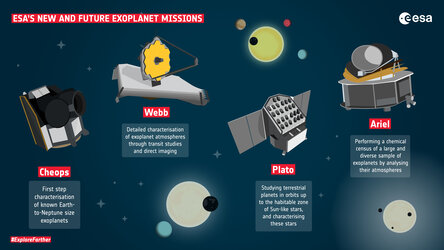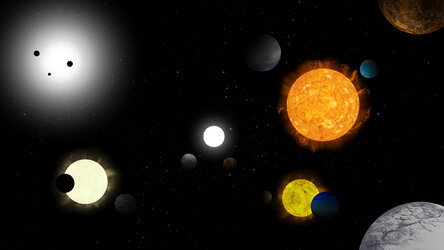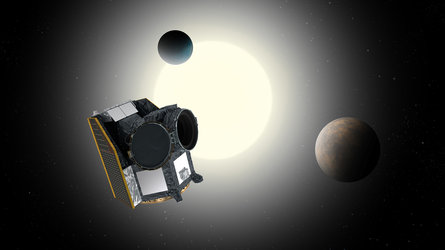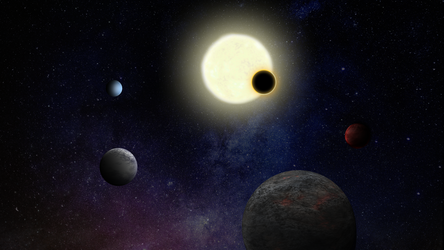Accept all cookies Accept only essential cookies See our Cookie Notice

About ESA
The European Space Agency (ESA) is Europe’s gateway to space. Its mission is to shape the development of Europe’s space capability and ensure that investment in space continues to deliver benefits to the citizens of Europe and the world.
Highlights
ESA - United space in Europe
This is ESA ESA facts Member States & Cooperating States Funding Director General Top management For Member State Delegations European vision European Space Policy ESA & EU Responsibility & Sustainability Annual Report Calendar of meetings Corporate newsEstablishments & sites
ESA Headquarters ESA ESTEC ESA ESOC ESA ESRIN ESA EAC ESA ESAC Europe's Spaceport ESA ESEC ESA ECSAT Brussels Office Washington OfficeWorking with ESA
Business with ESA ESA Commercialisation Gateway Law at ESA Careers Cyber resilience at ESA IT at ESA Newsroom Partnerships Merchandising Licence Education Open Space Innovation Platform Integrity and Reporting Administrative Tribunal Health and SafetyMore about ESA
History ESA Historical Archives Exhibitions Publications Art & Culture ESA Merchandise Kids Diversity ESA Brand Centre ESA ChampionsLatest
Space in Member States
Find out more about space activities in our 23 Member States, and understand how ESA works together with their national agencies, institutions and organisations.
Science & Exploration
Exploring our Solar System and unlocking the secrets of the Universe
Go to topicAstronauts
Missions
Juice Euclid Webb Solar Orbiter BepiColombo Gaia ExoMars Cheops Exoplanet missions More missionsActivities
International Space Station Orion service module Gateway Concordia Caves & Pangaea BenefitsLatest
Space Safety
Protecting life and infrastructure on Earth and in orbit
Go to topicAsteroids
Asteroids and Planetary Defence Asteroid danger explained Flyeye telescope: asteroid detection Hera mission: asteroid deflection Near-Earth Object Coordination CentreSpace junk
About space debris Space debris by the numbers Space Environment Report In space refuelling, refurbishing and removingSafety from space
Clean Space ecodesign Zero Debris Technologies Space for Earth Supporting Sustainable DevelopmentLatest
Applications
Using space to benefit citizens and meet future challenges on Earth
Go to topicObserving the Earth
Observing the Earth Future EO Copernicus Meteorology Space for our climate Satellite missionsCommercialisation
ESA Commercialisation Gateway Open Space Innovation Platform Business Incubation ESA Space SolutionsLatest
Enabling & Support
Making space accessible and developing the technologies for the future
Go to topicBuilding missions
Space Engineering and Technology Test centre Laboratories Concurrent Design Facility Preparing for the future Shaping the Future Discovery and Preparation Advanced Concepts TeamSpace transportation
Space Transportation Ariane Vega Space Rider Future space transportation Boost! Europe's Spaceport Launches from Europe's Spaceport from 2012Latest

Children imagine exoplanets
Thank you for liking
You have already liked this page, you can only like it once!
What do planets around other stars look like? Are they rocky, like our own planet Earth, or gassy, like Jupiter and Saturn? Do they have moons? Are they suitable to host life? These are some of the most fascinating questions in modern astrophysics.
Since the first discoveries of planets orbiting stars other than our Sun in the 1990s, scientists have discovered over 4000 exoplanets, revealing a variety of alien worlds much unlike any of the planets in our Solar System. While the study of exoplanets is one of the fastest growing areas in astronomy, there is still much we don’t know about planetary systems beyond our own.
On 6 October, at ESA’s Open Day in the Netherlands, children visiting the agency’s largest establishment with their families had a chance to unleash their fantasy and creativity, sharing with ESA scientists how they imagine some of these planets might look like. The result of this public engagement activity, led by ESA research fellow Alice Zocchi, is the ‘Exoplanet Zoo’ – a collection of more than 200 drawings, a fraction of them shown in this picture.
The artwork portrays a wide variety of stars and planets, some inspired by the looks of Earth, Mars and other Solar System worlds, along with many curious, original views. One day, observations from future facilities on ground and in space could perhaps report that some of these visionary drawings do have an actual counterpart somewhere in the Universe.
To investigate exoplanets, ESA is preparing to launch its first mission dedicated to this subject: Cheops, the CHaracterising ExOplanet Satellite. Due to lift off in mid-December, Cheops will perform detailed observations of bright stars known to host planets, particularly in the Earth-to-Neptune size range, enabling a first step towards characterising the nature of these distant, exotic worlds.
Cheops will also help provide targets for other missions, including the NASA/ESA/CSA James Webb Space Telescope, which will be used to search for the signatures of water and methane, important elements in our quest for signs of habitability. On a longer timeframe, ESA is planning two more missions dedicated to the study of exoplanets – Plato, the PLAnetary Transits and Oscillations of stars mission, and Ariel, the Atmospheric Remote-sensing Infrared Exoplanet Large-survey mission – keeping European science at the forefront of exoplanet research.
-
CREDIT
ESA – SJM Photography -
LICENCE
ESA Standard Licence

ESA’s new and future exoplanet missions

Exoplanet imaginarium

Cheops

Cheops















 Germany
Germany
 Austria
Austria
 Belgium
Belgium
 Denmark
Denmark
 Spain
Spain
 Estonia
Estonia
 Finland
Finland
 France
France
 Greece
Greece
 Hungary
Hungary
 Ireland
Ireland
 Italy
Italy
 Luxembourg
Luxembourg
 Norway
Norway
 The Netherlands
The Netherlands
 Poland
Poland
 Portugal
Portugal
 Czechia
Czechia
 Romania
Romania
 United Kingdom
United Kingdom
 Slovenia
Slovenia
 Sweden
Sweden
 Switzerland
Switzerland
























